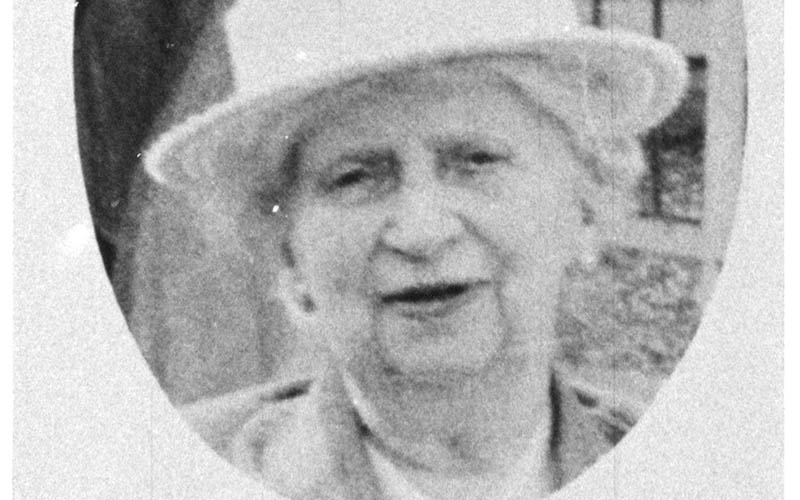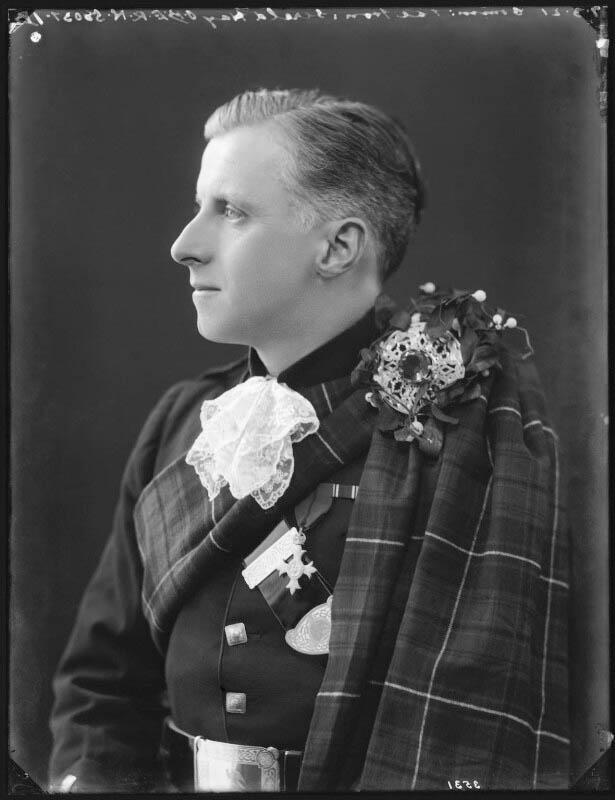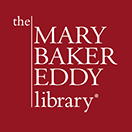Women of History: Violet Hay

Violet Hay in her later years. P00930. Photographer unknown.
A dynamic force, Caroline Violet Spiller Hay (1873–1969) was one of the first teachers of Christian Science in the United Kingdom. She was also the religion’s first teacher in South Africa. As one biographer notes, “From her earliest years as a student of Christian Science, Violet Spiller energetically dedicated herself to the extension of God’s kingdom on earth through active participation in the church organisation.”1
Hay was the daughter of British Army officer Lieutenant Colonel Duncan Chisholm Oliver Spiller (1843–1923) and Matilda Lucy (Stirling) Spiller (1851–1931). One Friday afternoon in 1896, she attended one of Britain’s earliest Christian Science services, held in London.2 Her desire to work in the growing Christian Science movement soon became evident, as she took on numerous roles, serving First Church of Christ, Scientist, London, in many capacities. She was able to visit Boston several times, where Mary Baker Eddy had recently founded The Mother Church, and caught a few glimpses of Eddy in Concord, New Hampshire, where she was living at the time. Hay’s 1946 reminiscence, “My brief glimpses of Mrs. Eddy,” is located in the Library’s collections. You can read it here.

Hon. Sereld Mordaunt Alan Josslyn Hay, taken by Bassano Ltd., 7 March 1921. Photo Courtesy of National Portrait Gallery, London.
Hay was first listed as a Christian Science practitioner (healer) in 1901. She became a teacher of Christian Science after attending the Board of Education’s Normal class in 1907.
Her service took on a more international flavor when she moved to South Africa in 1915. There she married a naval commander, the Hon. Sereld Hay (1877–1939), continuing to practice healing and teach classes in Cape Town. She also served as the Committee on Publication for Cape Province. In this media relations role for The Mother Church, she addressed harsh criticisms of Eddy and Christian Science that appeared in the South African press. These responses were both pointed and articulate.3
A 1917 corrective letter that Hay wrote to a Cape Town newspaper exemplifies an energetic defense of her faith. It concluded:
Christian Science may be maligned or misrepresented by those who do not understand it, but this cannot hinder the activity of a movement which is so inspired by the spirit of love, goodwill and unselfish service, and whose whole purpose is to bless humanity universally and impartially. Christian Scientists know that opposition only comes through misunderstandings which time will remove, and in the meantime nothing can take from them the peace of mind and the opportunities for “rejoicing with the Truth” which Christian Science is bringing into their lives.4
Hay and her husband returned to London around 1921. For the next 48 years, until the time of her passing, she continued her work as a teacher and healer.
She is perhaps best known for her work on the 1932 Christian Science Hymnal. In addition to contributing a number of poems that were set to music as hymns, she also chaired the Christian Science Hymnal Revision Committee in London, designed “to receive and consider recommendations from churches and individuals in the British Isles touching the Hymnal, together with contributions of outstanding examples of hymnology.” After the London Committee finished its work, she became a member of the Final Hymnal Revision Committee.5
Over seven decades Violet Hay’s aim was straightforward: to serve humanity through service in the cause of Christian Science. An excerpt from the introduction she gave to lecturer Bicknell Young in 1913 explains this:
Now Christian Science asks nothing of the world; it has nothing to gain from any one, but it has everything to give; and it is because of this, because we who are Christian Scientists today know that through this teaching we are gradually gaining a recognition of the kingdom of heaven within, together with a measure of the love and health and peace that accompany this recognition, that we are not afraid to go forward and hold out our hands to all the world and say: Be with us, where we are, in this.6
Listen below to an audio excerpt from Violet Hay’s 1956 address in The Mother Church, “Our Leader’s Contribution to World Peace.”
- Peter J. Hodgson, Violet Hay (Chestnut Hill, Massachusetts: Longyear Museum Press, 2005), 21.
- Violet Hay, “My brief glimpses of Mrs. Eddy,” 1946, Reminiscence, 1.
- For more information on Hay’s years in South Africa, see Hodgson, Violet Hay, 25–32.
- “‘Tallow Dips’ – and Others,” Cape Times (Cape Town, South Africa), 24 December 1917. This clipping, numbered 1918–2623, is found in Church Archives, box 531624, folder 255473.
- The purpose of the London Committee is outlined in “Item of Interest,” Christian Science Sentinel, 25 January 1930, 412. The “Hymnal History” in the Church Archives (box 4790, folder 201350116) provides a detailed overview of how this revision was put together and who was involved.
- “London, England.” Sentinel, 5 July 1913, 873.

